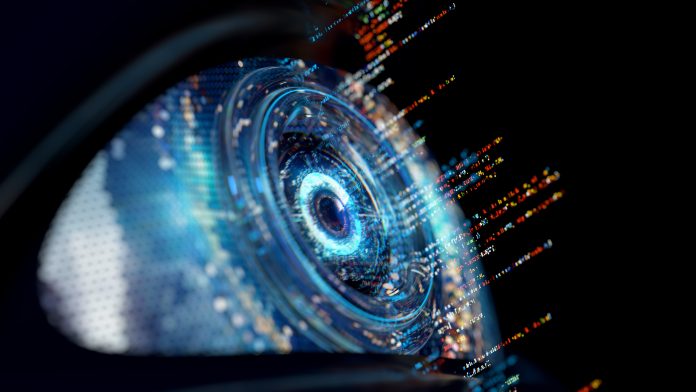A new eye implant paired with augmented reality glasses has allowed patients with previously untreatable blindness to read again
The results of a European clinical trial, published in The New England Journal of Medicine, show promising outcomes for individuals with geographic atrophy, a form of dry age-related macular degeneration (AMD).
A first in vision restoration
The trial involved 38 patients across 17 hospital sites in five countries, including the UK’s Moorfields Eye Hospital and University College London (UCL). All participants had lost central vision in one eye due to geographic atrophy, the main part of the retina, due to a die-off. This condition leads to a complete loss of central vision and has no approved treatment to date, affecting around 5 million people worldwide.
84% of participants were able to read letters, numbers, and words using the new device. Many of these individuals could not even detect a standard vision chart before the implant. On average, patients gained the ability to read five lines on the chart, marking a significant improvement in their functional vision and quality of life.
How the implant works
The device used in the trial, known as the PRIMA System, is a wireless, subretinal photovoltaic implant. It is a tiny chip, about 2mm x 2mm in size and only 30 microns thick, which is half the thickness of a human hair. It is implanted under the retina using a minimally invasive surgical procedure that takes less than two hours and can be performed by any trained vitreoretinal surgeon.
The PRIMA chip works in combination with special augmented-reality glasses. These glasses contain a video camera that captures the visual environment and transmits the information through near-infrared light to the implant.
The chip acts like a miniature solar panel, converting this light into electrical signals that are passed through the remaining retinal cells to the optic nerve, and then to the brain, where they are perceived as vision.
A small computer worn on the patient’s waistband processes the visual data using artificial intelligence algorithms. A built-in zoom function in the glasses allows users to magnify text and objects, helping them focus on details that were previously invisible.
Learning to see again
About a month after surgery, once the eye has healed, the system is activated. Patients then undergo months of rehabilitation to learn how to interpret and use their new form of artificial vision. This process is critical, as the restored vision is not the same as natural sight.
Participants were encouraged to challenge themselves with reading, solving puzzles, and other activities requiring visual focus. Some went even further; one patient even used the device to navigate public transport independently, a task previously impossible.
The device did not affect the remaining peripheral vision of any participant, making it a safe option for those with central vision loss.
The successful outcomes of the PRIMA System trial open the door to wider use of these devices in treating not only dry AMD but potentially other blinding conditions in the future. With no current treatment for geographic atrophy, this innovation represents a significant leap forward in restoring independence and quality of life to millions affected by central vision loss.











